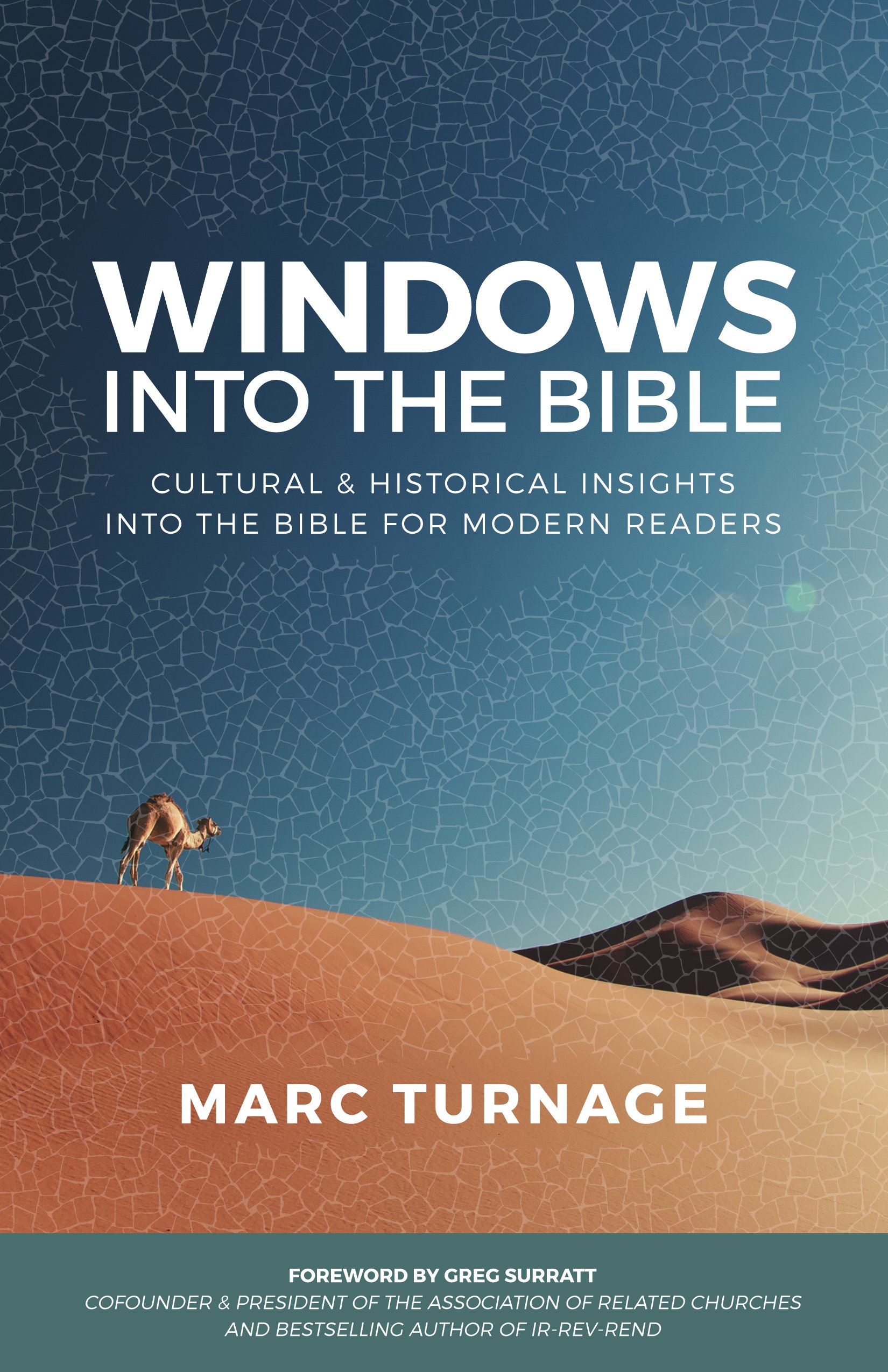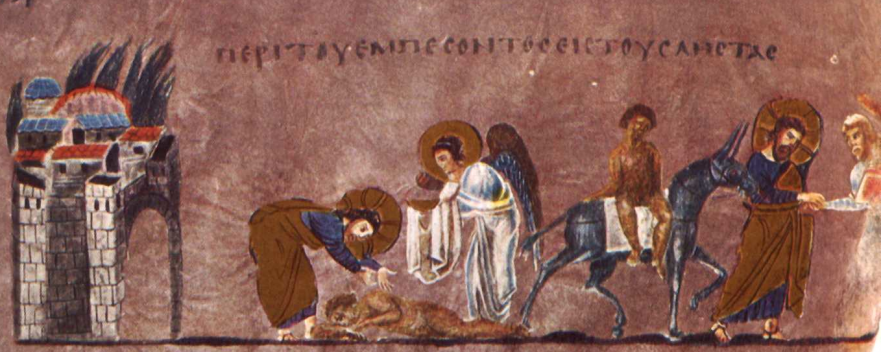The Good Samaritan (Luke 10:25-37) is perhaps one of the most well-known of Jesus’ parables. The origin of the parable derives from an exchange between Jesus and an expert in the Law. The scribe asked Jesus, “What shall I do to inherit eternal life?” Jesus responded to his question in a very Jewish manner with another question, asking the scribe to summarize the Law. The scribe responded by quoting Deuteronomy 6:5, “You shall love the Lord your God, with all your heart, and with all your soul…” and Leviticus 19:18, “and your neighbor as yourself.”
Deuteronomy 6:5 and Leviticus 19:18 are two of three passages within the Old Testament that begin with the phrase וְאָהַבְתָּ (ve’āhavtā; “and you will love”). Jewish interpreters, like Jesus and Paul, connected biblical passages due to shared language between the two verses. The hermeneutical method was known as gezerah shevah. Language, not theology, drove the hermeneutic. Ancient Jewish interpreters assumed that God, who inspired the biblical writers, intended connections between passages that had shared vocabulary even if the passages came from different books. In their handling of Scripture, when they found passages that had shared vocabulary, language drove the hermeneutical method and by bringing the passages together the theological idea was birthed. Quite often, one passage was viewed as esoteric or abstract and the other passage provided a tangible, practical way to interpret the first passage. Loving God with all one’s heart, soul, and strength is abstract. Ancient Jewish interpreters would understand that the shared language between Deuteronomy 6:5 and Leviticus 19:18 pointed to Leviticus 19:18—“Love your neighbor who is like yourself”—providing a tangible, practical way one loved God: by loving the one created in God’s image (see Gen. 1:27). The second passage interprets the first.
Premium Members and Friends of JP must be signed in to view this content.
If you are not a Premium Member or Friend, please consider registering. Prices start at $5/month if paid annually, with other options for monthly and quarterly and more: Sign Up For Premium

This article is just one chapter of Marc Turnage’s, Windows into the Bible: Cultural and Historical Insights into the Bible for Modern Readers (Springfield, Mo.: Logion, 2016). If you enjoyed this chapter, be sure to check out the entire book!
- [1] David Flusser, “A New Sensitivity in Judaism and the Christian Message,” in Judaism and the Origins of Christianity (Jerusalem: Magnes, 1988), 469-89; and Marc Turnage, “Unless Your Righteousness Exceeds That of the Scribes and Pharisees” in Windows into the Bible: Cultural and Historical Insights into the Bible for Modern Readers (Springfield, Mo.: Logion, 2016). ↩
- [2] Shmuel Safrai, “Religion in Everyday Life,” in The Jewish People in the First Century (2 vols.; ed. Shmuel Safrai and Menahem Stern; Philadelphia: Fortress, 1976), 2:828. ↩
- [3] See Eli Shukron, “Did Herod Build the Foundations of the Western Wall?” in City of David Studies of Ancient Jerusalem. The 13th Annual Conference (Jerusalem: Megalim, 2012), 13-26. ↩
- [4] Thomas Kazen, Issues of Impurity in Early Judaism (Coniectanea Biblica New Testament Series 45; Winona Lake, Indiana: Eisenbrauns, 2010), 146. ↩
- [5] Vered Noam, Megillat Ta’anit. Versions, Interpretation, History with a Critical Edition (Jerusalem: Yad ben-Zvi Press, 2003), 78-79, 211-14 [Hebrew]. ↩
- [6] Menahem Stern, “Aspects of Jewish Society: The Priesthood and Other Classes,” in The Jewish People in the First Century (2 vols.; ed. Shmuel Safrai and Menahem Stern; Philadelphia: Fortress), 2:596-612. ↩
- [7] See Brad Young, The ParablesParables: Jewish Tradition and Christian Interpretation (Peabody, Mass.: Hendrickson, 1998), 113. ↩
- [8] Young, The Parables, 111-13. ↩
- [9] Gedalyahu Alon, Jews, Judaism and the Classical World (Jerusalem: Magnes Press, 1977), 354-73. ↩
- [10] See Cotton, Di Segni, Eck, et al., eds. Corpus Inscriptionum Iudaeae/Palaestinae. Volume 1, Jerusalem, 42-45. ↩
- [11] See also R. Steven Notley and Jeffery P. Garcia, “Hebrew-Only Exegesis: A Philological Approach to Jesus’ Use of the Hebrew Bible,” in The Language Environment of First-Century Judaea (Leiden: Brill, 2014), 362-66. ↩
- [12] There is a certain irony in the parable, for although Jesus considered Samaritans as Gentiles, they had the Five Books of Moses as their Bible with certain Samaritan readings. The Samaritans, more or less, had the same Bible as the Sadducees, yet only the Samaritan acted in accordance with Leviticus 19:34. ↩
- [13] “Be merciful as your Father in heaven is merciful” Luke 6:36. ↩
- [14] Flusser, “A New Sensitivity,” 469-89; Marc Turnage, “Unless Your Righteousness Exceeds That of the Scribes and Pharisees” in Windows Into the Bible; idem, “Who’s Image?” Enrichment Journal (Summer, 2011): 116; idem, “The Three Pillars of Jesus’ Faith,” Enrichment Journal (Fall, 2001): 100. ↩
- [15] Many interpreters of Matthew 12:6 assume that, when Jesus’ spoke about “something greater” than the temple, He referred to Himself, particularly in light of His statement, “The son
of man is lord of the Sabbath.” There are two problems with this interpretation: (1) the Greek of Matthew 12:6 for “something greater” is in the neuter case, and therefore, cannot refer to Jesus, which would have been in the masculine case. Charity towards others fits the neuter case. (2) Jesus’ statement about the “son of man is lord of the Sabbath” does not refer to Jesus either as the parallel in Mark makes clear: “The Sabbath was made for man and not man for the Sabbath.” The son of man in this instance is the common use of the term in Hebrew meaning “a human being” (see Psalm 8). In the Gospels, Jesus used the term son of man in three ways: (1) meaning a human being, the everyman, (2) as part of the Passion predictions, and (3) to speak about the future end-of-days judge. Quite simply, the only one of these three meanings that makes sense in the context of Matthew 12:6 is “the everyman.” The son of man is not a messianic title. Moreover, we find an exact parallel to the Markan statement, “The Sabbath was made for man and not man for the Sabbath” in the earliest rabbinic commentary on Exodus, the Mekhilta de Rabbi Ishmael, which verifies my reading of the sentence that “the son of man (i.e., a human being) is lord of the Sabbath.” This statement, too, is not about Jesus; see “One Is Here Greater Than the Temple” in my Windows into the Bible, 387-98. ↩




Comments 2
What is the connection, if any, between Jesus’ parable here and the kindness shown in 2 Chronicles 28?
Updated with a new video on the Good Samaritan Parable by Marc Turnage. Check it out!